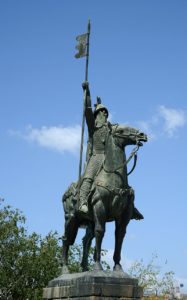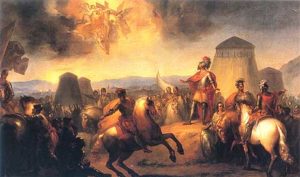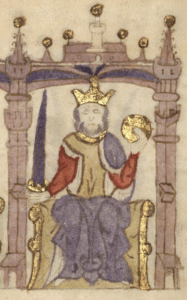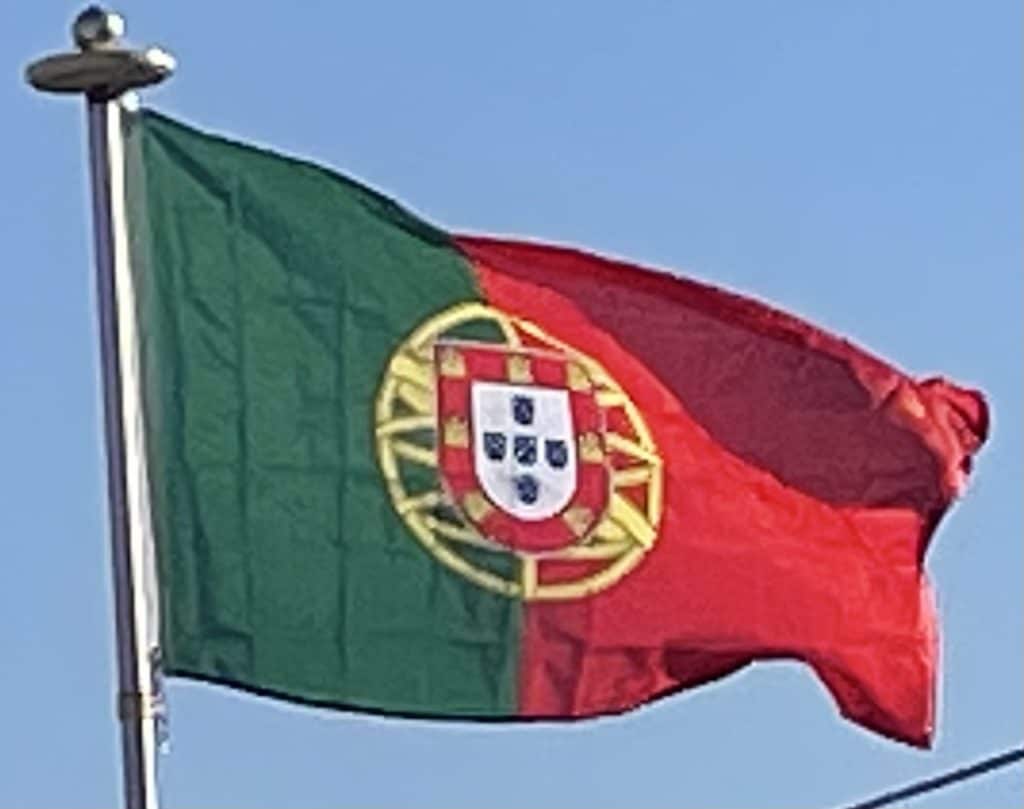Pelagius’ plan was to use the Cantabrian mountains as a place of refuge and protection from the invading Moors. He then aimed to regroup the Iberian Peninsula’s Christian armies and use the Cantabrian mountains as a springboard from which to regain their lands. In the process, after defeating the Moors in the Battle of Covadonga in 722, Pelagius was proclaimed king, thus founding the Christian Kingdom of Asturias and starting the war of Christian reconquest known in Portuguese as the Reconquista Cristã.

Count Vímara Peres organized the region he had reconquered, and elevated it to the status of County, naming it the County of Portugal after the region’s major port city – Portus Cale or modern Porto.
After annexing the County of Portugal into one of the several counties that made up the Kingdom of Asturias, King Alfonso III of Asturias knighted Vímara Peres, in 868, as the First Count of Portus Cale (Portugal). The region became known as Portucale, Portugale, and simultaneously Portugália – the County of Portugal.
Afonsine Era:
On 24 June 1128, the Battle of São Mamede occurred near Guimarães. Afonso Henriques, Count of Portugal, defeated his mother Countess Teresa and her lover Fernão Peres de Trava, thereby establishing himself as sole leader. Afonso then turned his arms against the Moors in the south.

Afonso’s campaigns were successful and, on 25 July 1139, he obtained an overwhelming victory in the Battle of Ourique, and straight after was unanimously proclaimed King of Portugal by his soldiers. This is traditionally taken as the occasion when the County of Portugal, as a fief of the Kingdom of León, was transformed into the independent Kingdom of Portugal.
Afonso then established the first of the Portuguese Cortes at Lamego, where he was crowned by the Archbishop of Braga. Afonso was recognized in 1143 by King Alfonso VII of León, and in 1179 by Pope Alexander III.
During the Reconquista period, Christians reconquered the Iberian Peninsula from Moorish domination. Afonso Henriques and his successors, aided by military monastic orders, pushed southward to drive out the Moors. At this time, Portugal covered about half of its present area. In 1249, the Reconquista ended with the capture of the Algarve and complete expulsion of the last Moorish settlements on the southern coast, giving Portugal its present-day borders, with minor exceptions.

In 1348 and 1349 Portugal, like the rest of Europe, was devastated by the Black Death.
In 1373, Portugal made an alliance with England, which is the longest-standing alliance in the world.
Joanine Era and Age of Discoveries:
In 1383, John I of Castile, husband of Beatrice of Portugal and son-in-law of Ferdinand I of Portugal, claimed the throne of Portugal. A faction of petty noblemen and commoners, led by John of Aviz (later King John I of Portugal) and commanded by General Nuno Álvares Pereira defeated the Castilians in the Battle of Aljubarrota. With this battle, the House of Aviz became the ruling house of Portugal.
